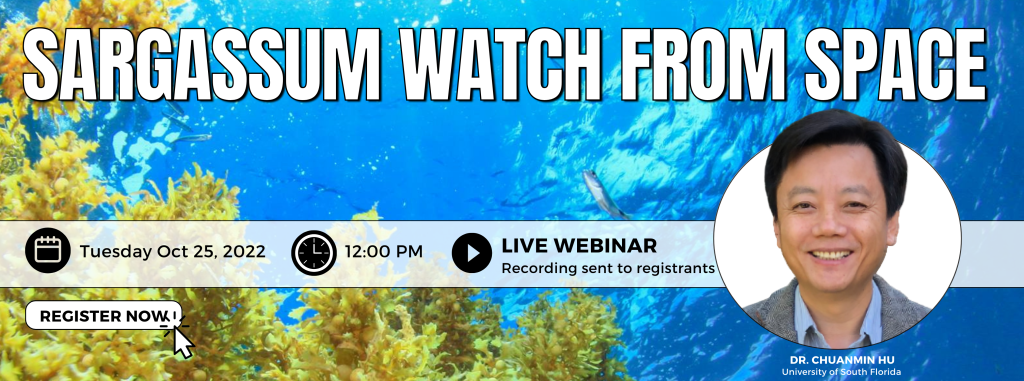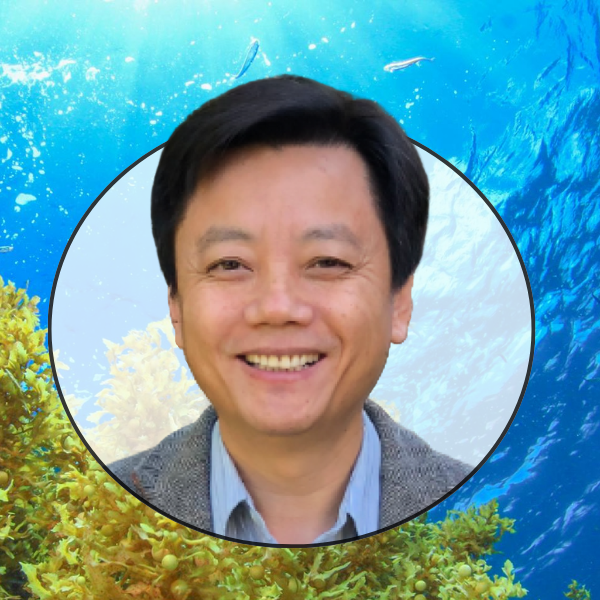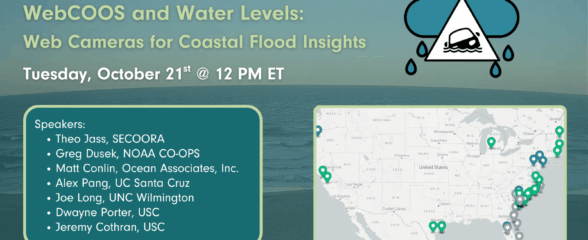
Join SECOORA for a webinar on October 25 at 12:00 PM ET presented by Dr. Chuanmin Hu from University of South Florida. He will be presenting on Sargassum Watch System that generates customized near real-time satellite imagery to monitor and track large Sargassum mats.
Abstract
Pelagic Sargassum is a brown macroalgae abundant in the Sargasso Sea and Gulf of Mexico. Since 2011, a continuous Sargassum belt extending from west Africa to the Gulf of Mexico is found to be recurrent every summer since 2011 (except 2013), causing many environmental, ecological, and economical problems in many nations and coastal states.
While understanding the bloom formation and inter-annual changes is still a matter of active research, a Sargassum Watch System (SaWS) generates customized near real-time satellite imagery to monitor and track large Sargassum mats. Integration of surface currents makes SaWS a simple tool to forecast short-term Sargassum movement.
Based on SaWS, monthly bulletins of current and future Sargassum outlooks are generated and distributed to various stakeholders. Further research is required to understand bloom mechanisms to improve Sargassum forecasts, and to develop better data products to improve monitoring in nearshore waters.
About the Presenter

Chuanmin Hu is Professor of Oceanography at the College of Marine Science, University of South Florida, Florida, USA. He obtained a B.S degree from the University of Science and Technology of China, and a PhD degree from the University of Miami (USA). He specializes in using laboratory, field, and remote sensing techniques to study algal blooms (harmful and non-harmful, macroalgae and microalgae), oil spills, coastal and inland water quality, and global changes. He directs the USF Optical Oceanography Lab to establish a Virtual Buoy System (VBS) to monitor coastal and estuarine water quality, an Integrated Red tide Information System (IRIS) to provide near real-time information on harmful algal blooms, and a Sargassum Watch System (SaWS) to combine remote sensing and numerical modeling to track macroalgae. He is an elected fellow of the American Association for the Advancement of Science (AAAS) and an elected member of the Academy of Science Engineering and Medicine of Florida (ASEMFL).
Related news

SECOORA Webinar | WebCOOS and Water Levels: Web Cameras for Coastal Flood Insights
On October 21st at 12 PM ET, SECOORA is hosting a webinar with investigators from the Webcam Coastal Observation System (WebCOOS) project team and the WebCOOS Project Manager. Web cameras are a low-cost technology that can be used to document flooding impacts to coastal communities. Register here.

SECOORA Funding Opportunity Announcement: Letters of Intent Solicitation
SECOORA will submit a coordinated regional proposal in response to the anticipated FY 2026 Implementation of the U.S. Integrated Ocean Observing System (IOOS) funding opportunity. Letters of Intent to be considered for inclusion in SECOORA’s full proposal are due September 9, 2025.

SECOORA Hosts the First Surface Elevation Table (SET) Community of Practice Virtual Workshop
The SECOORA SET Workshop was virtual on July 17, 2025. More than 50 Community of Practice members and stakeholders joined this collaborative workshop to discuss SET monitoring, coastal resilience, and data-driven decision making in the Southeast.